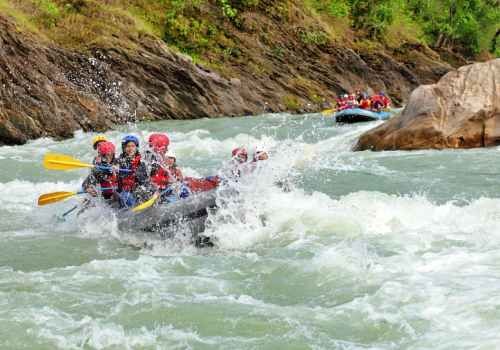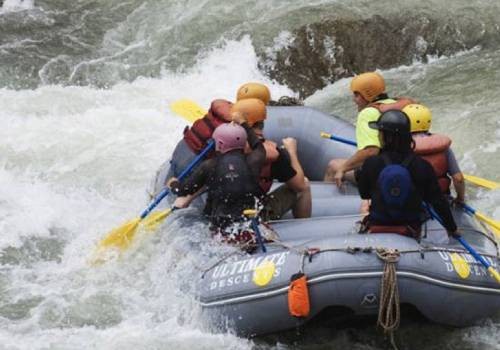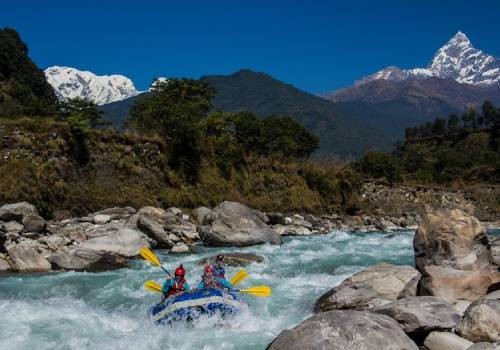Trisuli River two days rafting leads you to enjoy full exciting thrills with scenic floats downstream, starting from mid-hills to end at low and warmer Siwalik or Churia hills, where high rolling hills and Terai belt the flat land meets.
During two days of rafting on Trisuli River, with great opportunity to witness Nepalese rural farm life, along the riverside villages. As well some wild-life and different species of water birds, from kingfisher-cormorant-storks and much more.
The scenery and landscape are equally fascinating as you paddle downstream encountering enjoyable rapids with refreshing splash.
Trisuli River two days rafting, one of the best ways to experience the adventure in the world of water sports, a river of thrills that provides you great delights from scenic pleasant floats to white water with exciting bouncy waves and rapids.
Trisuli River runs along the main Nepal Highway, and flows all the way to southern Nepal, and eventually joins the great Ganges River in India.
The river starts from massive glaciers of Ganesh and Langtang Himal where other great rivers join like Buri Gandaki, Masrsyangdi and Seti with Kali-Gandaki in the end where Trisuli becomes a great Narayani River.
Rafting adventure begins with a drive along the main Nepal highway, an interesting journey to reach at rafting ‘put in point’. Where our captain of the raft will provide information on rafting regarding paddling technique to go through exciting rapids.
Rafting begins encountering many enjoyable ripple and big waves, and going through larger rapids, with name like ‘Ladies Delights’- Monsoon-Upset-Surprise-
S bend-Pin Ball / Mugling rapids with Double Decker, and the last final C bend rapid to end the rafting adventure.
Float leads past many villages with time to visit around and observe local farm life, as well as observe fishermen, using an old and interesting primitive method to catch and trap fish, like silver carp and other species.
Trisuli River two days rafting is another way to experience Nepalese rural farm life with a surge of adrenaline floating downstream with exciting adventure through many exciting rapids.
.jpg)



